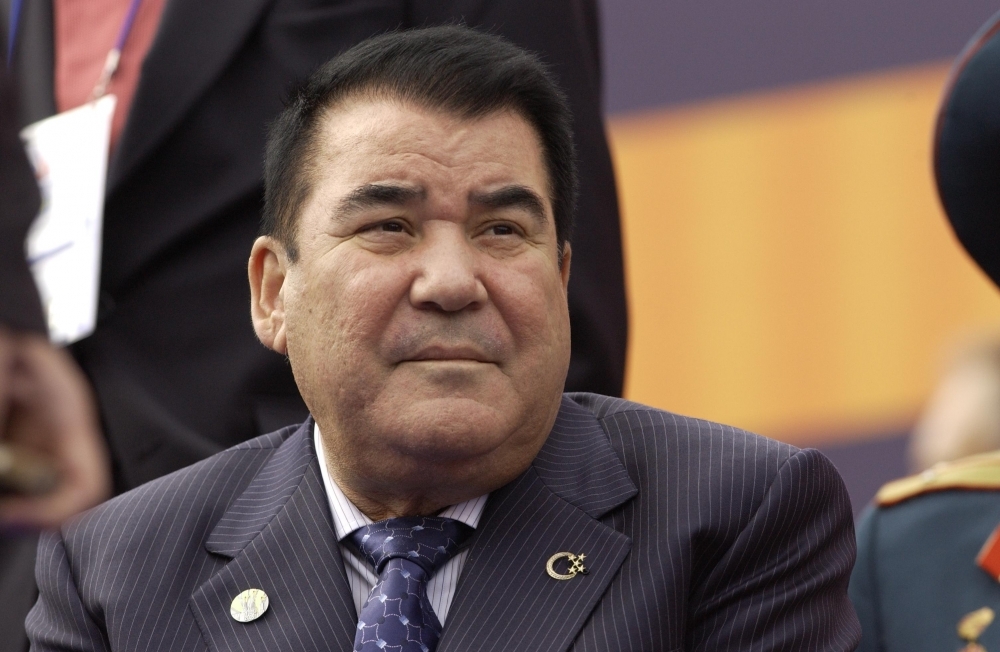This material belongs to: RadioFreeEurope.
You could say Gurbanbibi Atajanova was born with a set of jailer’s keys in her hand.
She served as the country’s prosecutor-general for an astonishing 10 years under Turkmenistan‘s first president, Saparmurat Niyazov, a leader known for constantly shuffling officials.
If you were accused of crimes and were brought before Atajanova, your life was about to take a serious turn for the worse.
She wore a dark-blue uniform with golden epaulettes, a blue cap with a gold badge and gold trim, and seemed to always have a sour expression on her face.
Atajanova was already an employee of the Prosecutor-General’s Office when the Soviet Union collapsed in late 1991. She was promoted to assistant prosecutor-general right after Turkmenistan became independent, and was named prosecutor-general on April 3, 1995.
Atajanova spearheaded the Turkmen government’s efforts to root out corruption for 10 years. She sent thousands of people to prison, among them scores of officials convicted of corruption.
Charging officials with corruption was one of the ways Niyazov perpetuated a turnstile policy when it came to officials, an approach many believe was used to prevent any one person from becoming too powerful or too popular.
State TV often showed Atajanova speaking to fallen, disgraced officials charged with crimes, usually some form of corruption. Atajanova coldly listed the state’s charges against the accused or just as coldly recounted punishments already meted out to the guilty — including confiscation of all property, prison, or internal exile to remote areas of Turkmenistan.
After the reported November 25, 2002, attempt on President Niyazov’s life, Atajanova led the investigation, rounding up not only suspects but their family members as well.
Simultaneously, Atajanova went after government officials. In March 2003, Atajanova announced that 34 former government officials, including two deputy prime ministers, a defense minister, and an energy minister and his deputies were found guilty of corruption and embezzlement and sent to internal exile in remote settlements.
30,000 Buckets?
There were rumors in December 2003 that Atajanova herself had been placed under house arrest for involvement in illegal narcotics trafficking, but at the end of that month she appeared on state television attending a cabinet meeting. However, there was some truth to the rumors.
At the end of 2005, Atajanova retired at age 58. Shortly after, the tables turned.
She was taken into custody in April 2006 and charged with involvement in the illegal narcotics trade. Soon after the authorities said they had seized from Atajanova 13 homes, a brick factory, a rice mill, five cars, three tractors, a bulldozer, two construction cranes, 40 hectares of land, more than $6 million, more than 2,000 cattle, and, mysteriously, more than 30,000 buckets.
I know. That last one is really strange. Even President Niyazov made a point of mentioning the buckets when Atajanova appeared before him, weeping and begging for mercy. Niyazov asked, “For what reason did you steal 30,000 buckets?”
The reason for the buckets was never explained, but they sparked some interesting rumors about their purpose, including that they were filled with gold, or heroin.
Atajanova was taken into custody and quickly tried and convicted.
But the story was not over.
Nikolai Gavrilov was a senior employee in the National Security Committee’s counternarcotics department. He is believed to be the person who discovered and reported Atajanova’s involvement in the illegal trafficking of narcotics.
Gavrilov and his wife were killed in Ashgabat on November 8, 2006. The perpetrators have never been caught.
Gurbanbibi Atajanova’s case says much about fighting corruption in Central Asia. She supposedly led the fight against corruption, helping to imprison scores of officials on corruption charges. But even the partial list of Atajanova’s seized assets shows she accumulated her wealth over many years; some of it apparently was taken from people she helped send to prison.
It is doubtful no one noticed what Atajanova was doing.
The December 2003 rumor of Atajanova’s house arrest was not true, but it appears that her brother and adopted son were apprehended at that time for drug smuggling.
When Atajanova was finally sent to prison, most of her family, including her brother and adopted son, seem to have been imprisoned also.
Atajanova was incarcerated in the women’s prison in Dashoguz in 2006. That was the last credible information about Turkmenistan’s Iron Lady.
RFE/RL’s Turkmen Service contributed to this report. The views expressed in this blog post do not necessarily reflect those of RFE/RL


